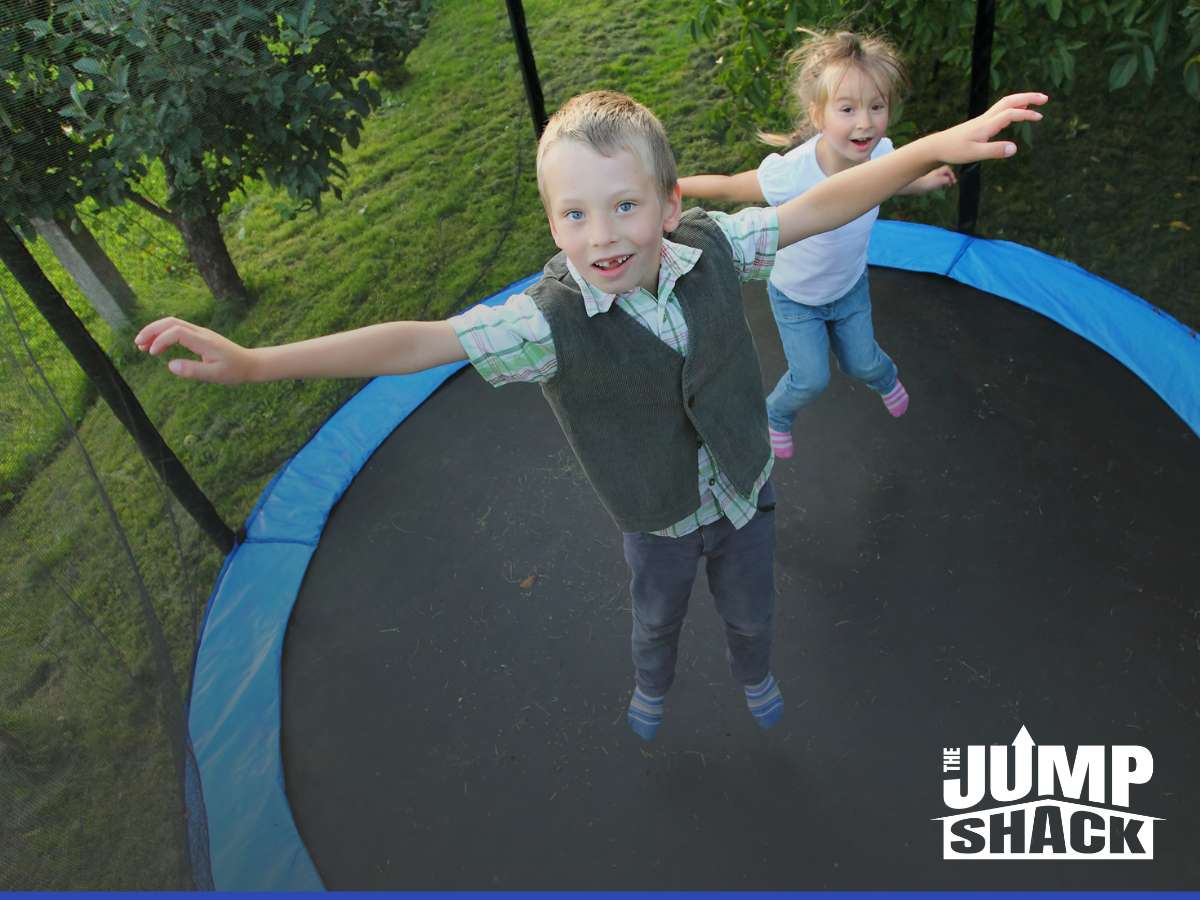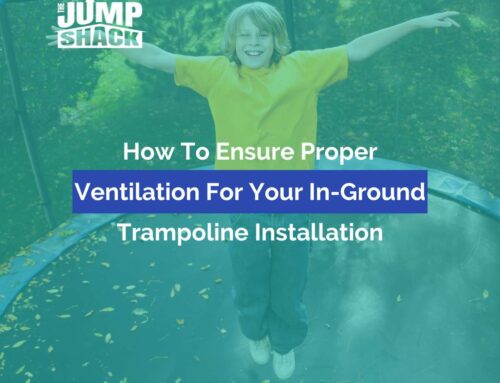Essential Maintenance Tips To Keep Your Trampoline In Top Shape For Years
An in-ground trampoline is a fantastic way to enjoy outdoor fun while keeping your yard sleek. But just like any backyard equipment, it needs regular maintenance to stay safe and in top shape. Ignoring its maintenance could lead to issues you truly don’t want to face (drainage problems, worn-out springs, etc.)
What should you be checking then, and how often? In this guide, we’ll explain key steps to ensure your trampoline works fine for many years to come so that you can make the most of it!

Establish a Trampoline Inspection Routine
Before delving into the specifics of a trampoline inspection checklist, it’s crucial to establish a consistent inspection schedule. The frequency of these inspections may vary based on factors like usage frequency and local climate conditions. However, the usual recommendation is:
- Before each use: Conduct a brief check before each session to detect any immediate hazards.
- Monthly: Perform a more detailed inspection at least once a month to identify wear and tear that may not be immediately apparent.
- Seasonally: Undertake a thorough inspection at the onset and conclusion of each season to ensure your trampoline is prepared for changing weather conditions.
Now, let us delve into the trampoline inspection checklist itself.
1. Inspect The Trampoline Mat For Wear & Tear
The trampoline mat is the core of any in-ground trampoline, so you must check it out to ensure safety and durability. Over time, the mat can experience wear and tear from use, weather, and natural aging.
Start the inspection by checking the mat’s surface for any visible signs of damage, including small holes or thinning areas. Then, check the mat’s bounce quality. It may have lost some of its tension if it feels overly soft or saggy, reducing safety and performance.
Keeping the mat clean is also important for it to last a long time. Dirt, debris, and moisture can make the material break down faster. It is a good idea to gently brush off leaves and rinse the mat with water when necessary.
2. Check The Springs & Frame For Rust Or Damage
The springs and frame are also essential to guarantee proper bounce in your in-ground trampoline. Keeping them in top condition allows you to maintain your trampoline more protected against possible damage.
Regularly inspect the springs for rust, stretching, or detachment, as weak or damaged springs can reduce bounce quality and pose safety risks. You should also check the frame for any signs of cracking, bending, or corrosion. If you see any sign of rust, use a rust remover or replace the affected parts to avoid further damage.
3. Assess The Safety Pads & Edge Covers
The safety pads on your trampoline are important for protecting jumpers from the springs and frame. Sun, rain, and repeated use can cause the pads to fade, tear, or move over time, so it’s important to check them regularly to ensure they’re still in good condition.
We also recommend making sure there is no worn-out padding or gaps that expose metal parts, as they can increase the risk of injury. If the padding no longer provides adequate cushioning, replace it with high-quality, weather-resistant materials. Properly securing the pads in place will help maintain a safe jumping environment for everyone.
4. Maintain Proper Drainage To Prevent Water Buildup
To avoid structural problems, mold, and slippery surfaces, ensure your in-ground trampoline’s pit has proper drainage to prevent water from pooling. This may include a gravel base, drainage pipes, or a sump pump.
Consider the following steps to keep proper drainage:
- Ensure the trampoline area is free of pooling water, especially after heavy rain.
- Maintain proper drainage by leveling the ground.
- Redirect runoff whenever necessary
5. Keep An Eye On The Airflow System
To improve your in-ground trampoline’s bounce and responsiveness, you need to ensure adequate airflow. Leaves, dirt, and overgrown grass in the vented pads or side openings can cause restricted airflow, leading to a sluggish mat. To avoid that, simply perform regular checks and clear any blockage as soon as it appears.
If necessary, adjust the surrounding landscaping or install additional ventilation panels around the pit to improve air circulation and create a smoother, more enjoyable jumping experience.
6. Perform a Stability & Leveling Check
An uneven trampoline can affect bounce quality and lead to safety hazards. This irregularity usually happens due to ground shifting, soil erosion, or improper in-ground installation. The frame should always sit level within the pit to guarantee proper bounce quality.
That’s why we suggest checking your trampoline periodically to avoid tilting or sinking, and if you notice any, adjust the foundation by adding support or compacting the soil. If necessary, reinforce the trampoline’s base with additional materials to maintain stability and ensure a safe and consistent jumping surface.
7. Seasonal maintenance tips
Each season brings different challenges for maintaining your in-ground trampoline. By adjusting your maintenance routine throughout the year, you can keep it in top condition and extend its lifespan.
- Winter: During this time, cover your trampoline to protect it from moisture or high winds, especially at night, when the winds tend to be stronger. While many parts of Arizona don’t have a strong winter, you still need to protect it to avoid any damage.
- Spring: Inspect for rust, loose bolts, and wear. You should also clear drainage areas and remember to deep clean mats and pads.
- Summer: Use UV-resistant safety pads and check for signs of sun damage on the mat and frame.
- Fall: Leaves, twigs, and other debris can accumulate on and around your trampoline, leading to drainage and airflow issues. Sweep off the mat and clear the surrounding area frequently.
Full In-Ground Trampoline Inspection Checklist
Here’s a list of the most important tasks to ensure your in-ground trampoline is in good shape:
- Frame: Check for rust, corrosion, bends, and damage.
- Frame pads: Ensure they are secure and cover all frame and spring areas.
- Springs: Check tension and look for rust or corrosion.
- Mat: Examine for tears, holes, wear, and loose stitching. Keep it clean and free from debris and other foregoing objects.
- Net enclosure (if applicable): Check for holes, and rips, and ensure secure attachment. Zippers and closures must function correctly.
- Ladder and accessories: Ensure stability and secure attachment. Inspect for wear and tear.
Need a replacement part? The Jump Shack can help!
Regular maintenance is crucial to keeping your in-ground trampoline safe and sturdy. By checking the mat regularly, you’ll prevent costly repairs and ensure a lot of fun!
If you’re looking for high-quality replacement parts or a brand-new in-ground trampoline, The Jump Shack has you covered. Browse our selection of premium trampolines and accessories to keep your backyard setup in peak condition! Contact us today to find the perfect trampoline or parts for your needs.
The Jump Shack
1528 W San Pedro St #4
Gilbert, AZ 85233
Tel: (800) 414-2001
Email: [email protected]
Website: aztrampoline.com







